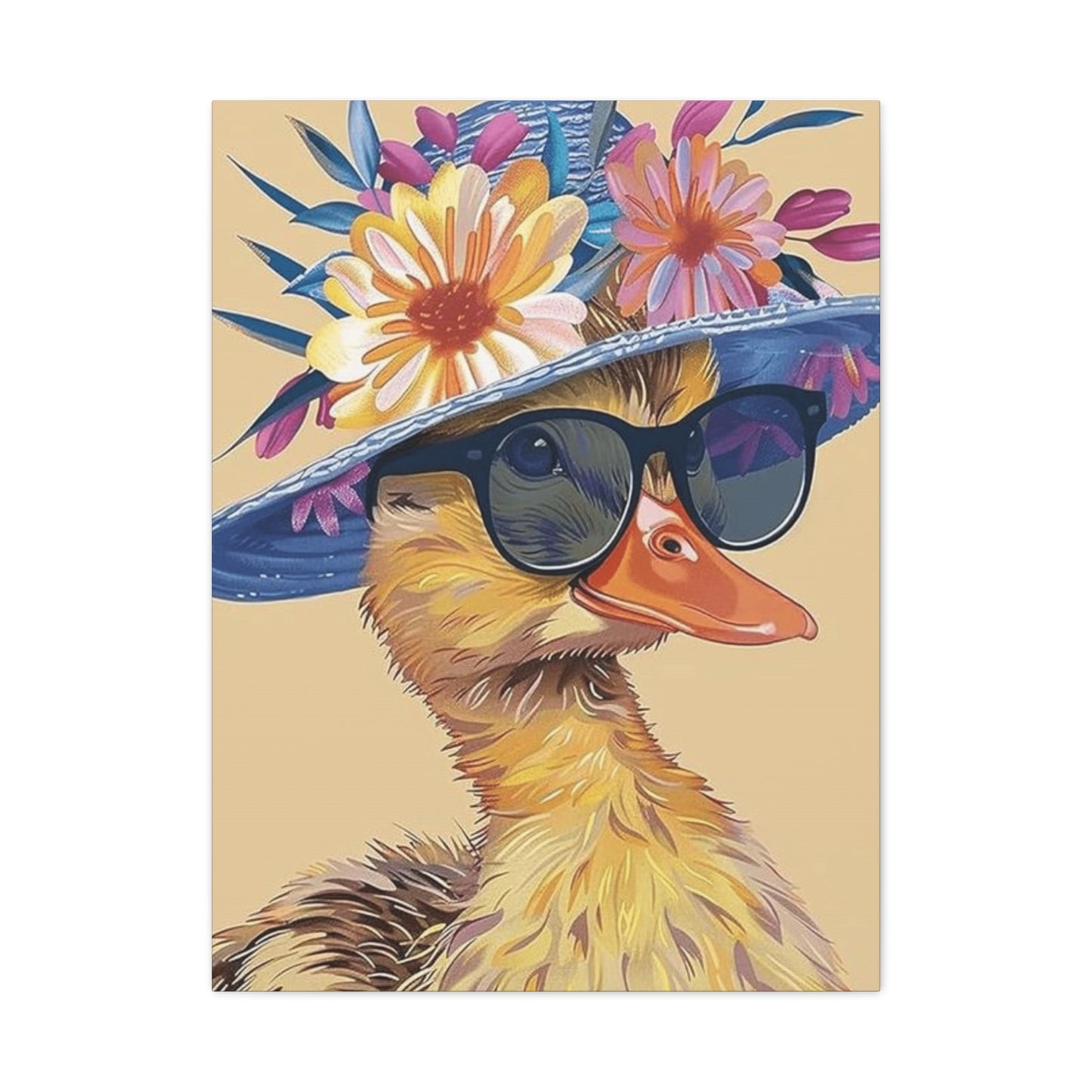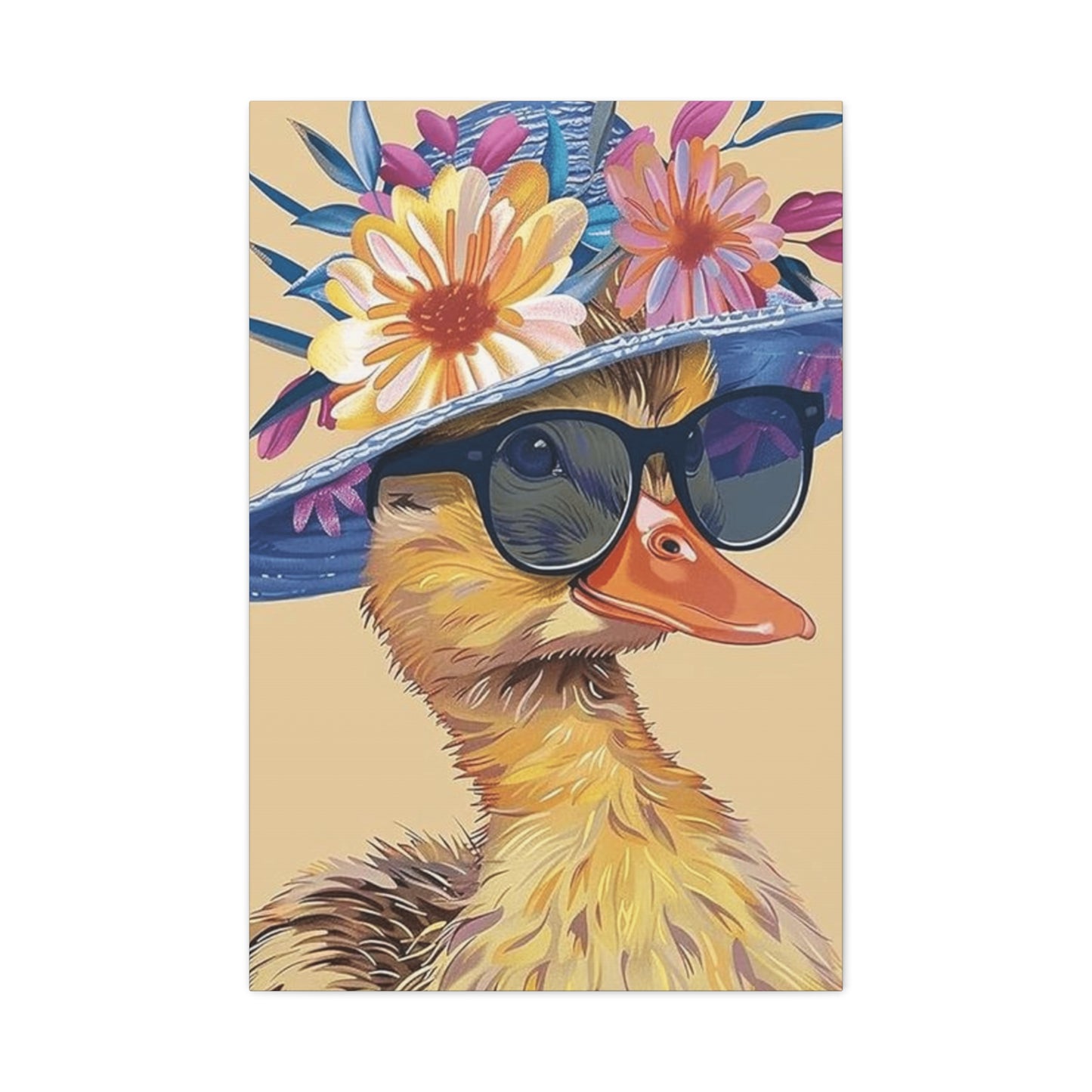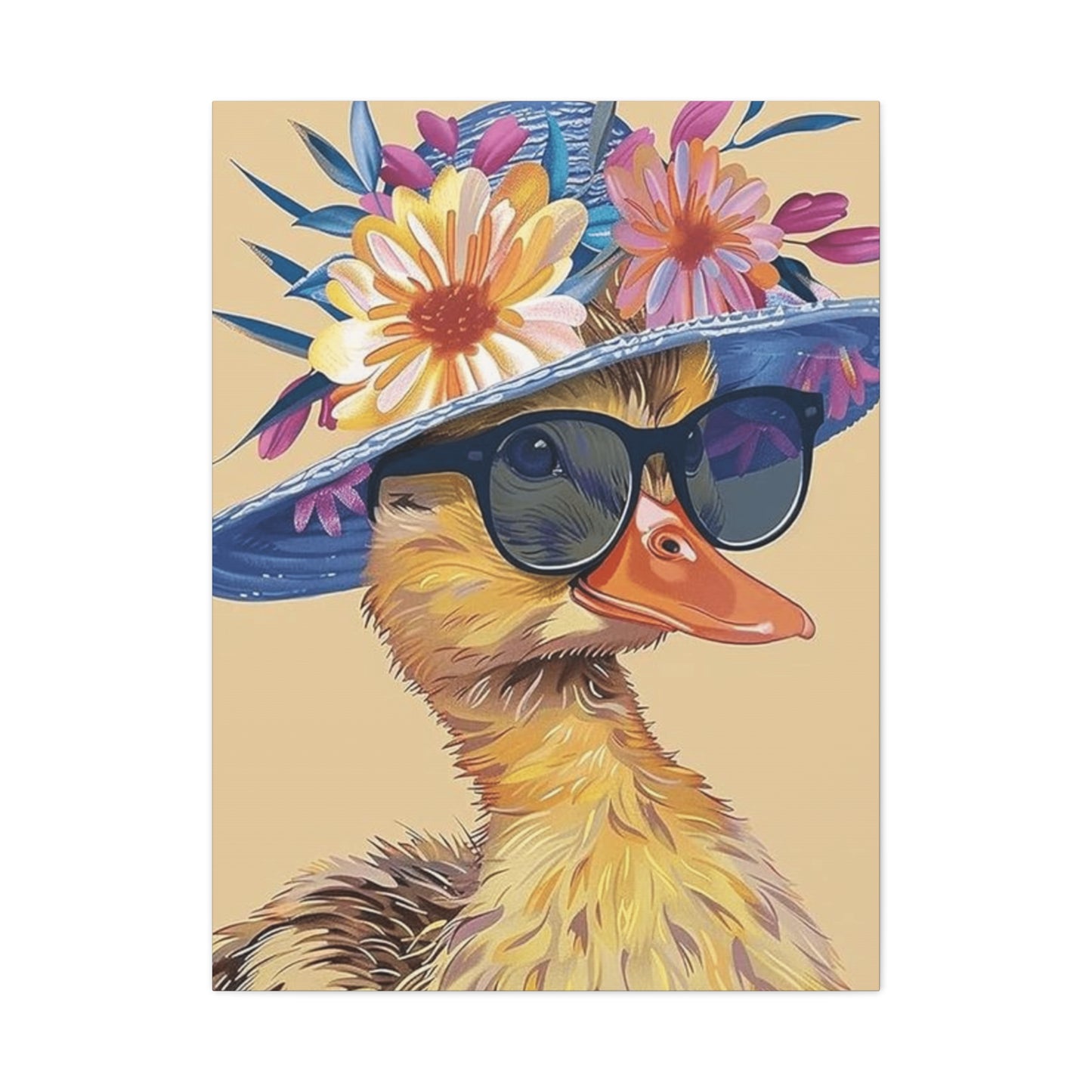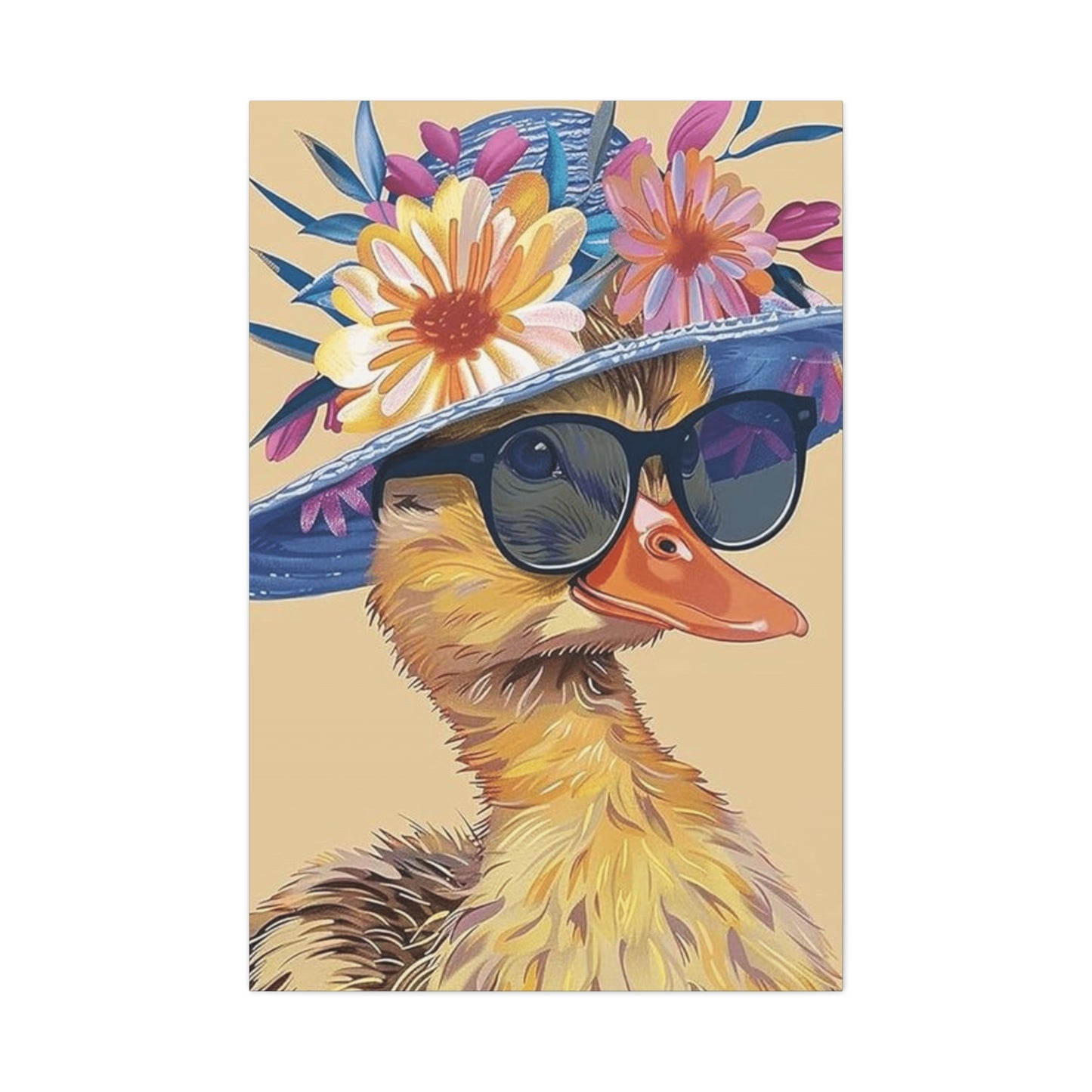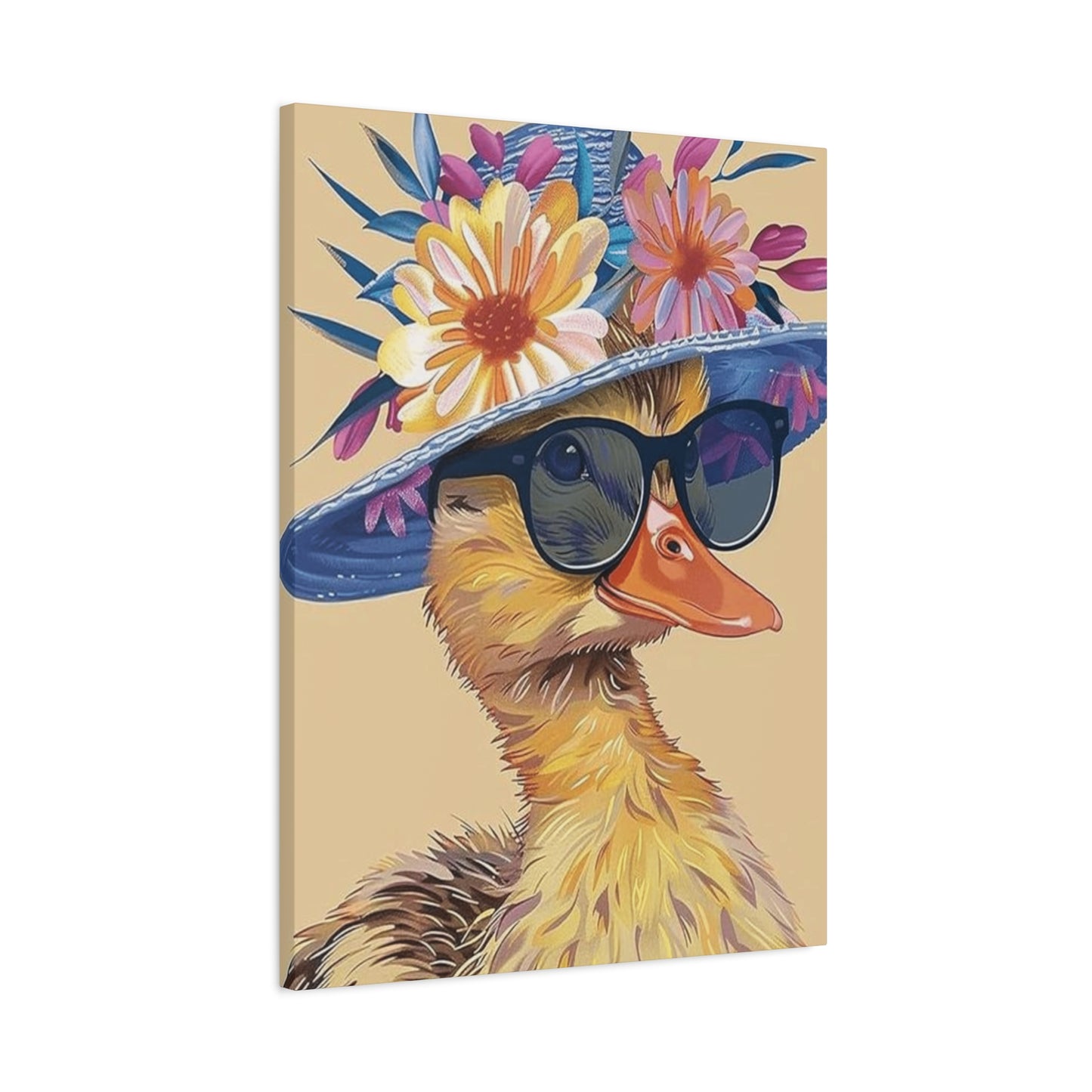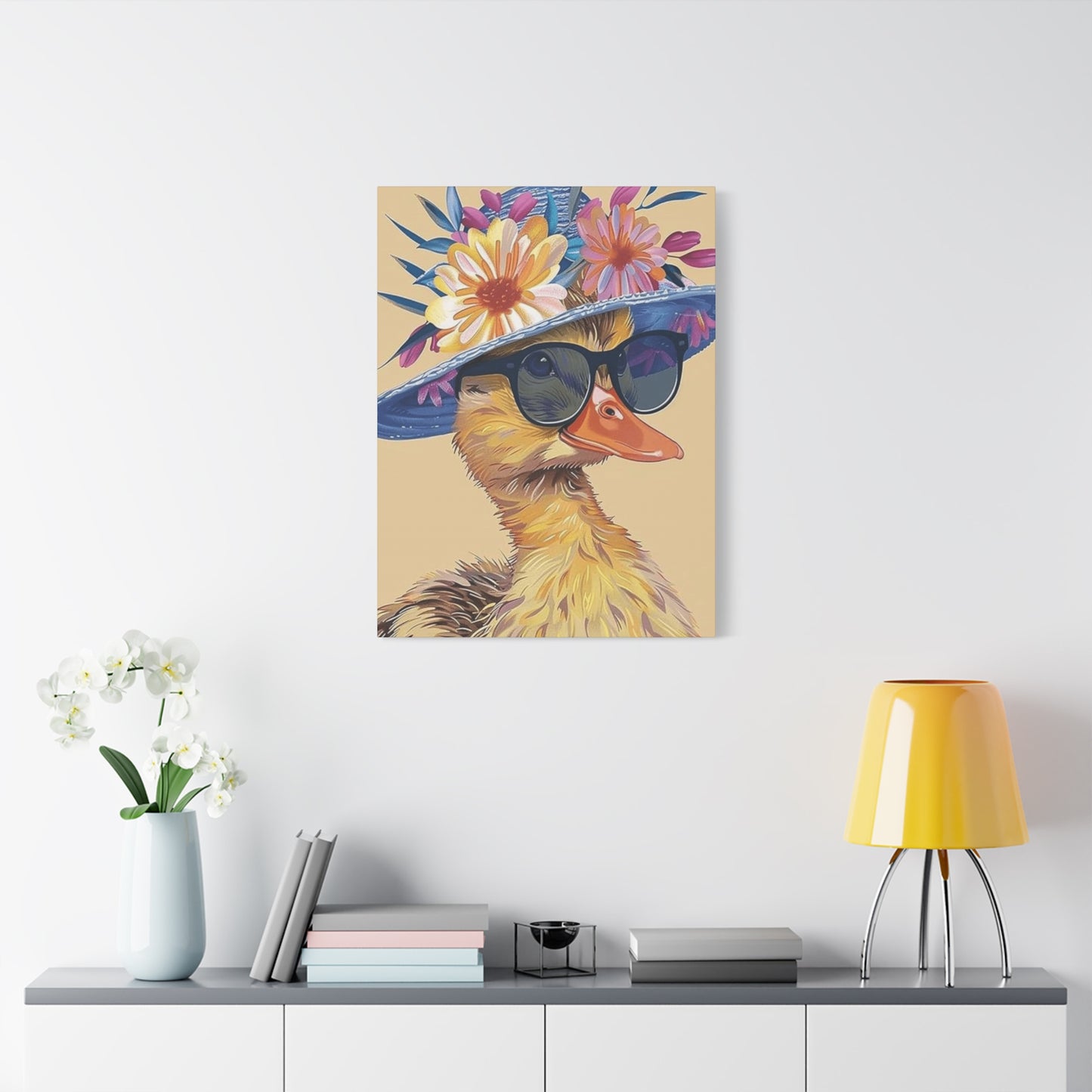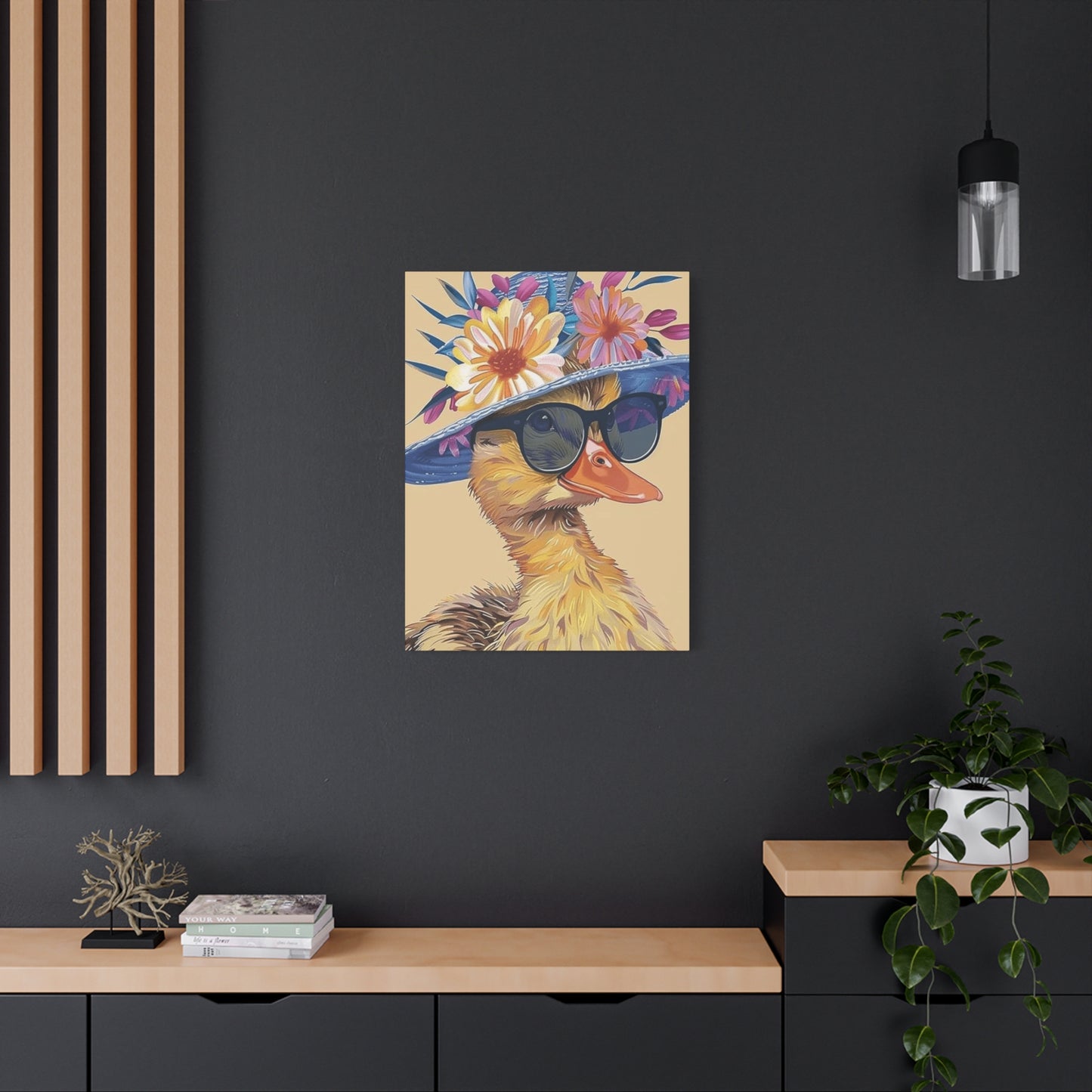Duck Wall Art Canvas Prints: Bringing Nature's Beauty Into Your Living Environment
The allure of waterfowl artwork has captivated homeowners and nature enthusiasts for generations, offering a perfect blend of natural beauty and artistic expression. Duck canvas prints represent more than mere decoration; they embody the serene essence of wetland environments and the graceful elegance of these remarkable birds. Whether you're drawn to the vibrant plumage of mallards or the subtle beauty of wood ducks, these artistic representations bring the tranquil atmosphere of marshlands and ponds directly into your living environment.
The popularity of duck-themed artwork continues to grow as people seek authentic connections to the natural world through their home decor choices. These prints offer an accessible way to incorporate the calming influence of nature into modern living environments, creating focal points that inspire contemplation and appreciation for wildlife. The artistic interpretation of waterfowl subjects provides endless possibilities for enhancing residential and commercial environments with meaningful, aesthetically pleasing imagery.
Canvas printing technology has revolutionized how we display and enjoy duck artwork, offering superior reproduction quality that captures every detail of the original paintings or photographs. The texture and durability of canvas material complement the organic nature of waterfowl subjects, creating presentations that feel authentic and engaging. Modern printing techniques ensure that colors remain vibrant and true to the artist's original vision while providing longevity that allows these artworks to grace walls for years to come.
Duck Canvas Prints as a Nature Enthusiast's Top Choice
Nature lovers consistently gravitate toward duck canvas prints because these artworks authentically represent the beauty and diversity of wetland ecosystems. The appeal extends beyond simple aesthetic appreciation to encompass a deeper connection with the natural world that many people crave in their daily lives. These prints serve as windows into habitats that many may rarely experience firsthand, bringing the serenity and wonder of marshlands into residential and commercial environments.
The variety of duck species available as canvas print subjects ensures that every nature enthusiast can find artwork that resonates with their personal preferences and experiences. From the iconic mallard with its distinctive green head to the elegant pintail with its streamlined silhouette, each species offers unique visual characteristics that translate beautifully to canvas presentations. The diversity of poses, settings, and artistic styles available means that collectors can build comprehensive galleries that showcase different aspects of waterfowl behavior and habitat.
Professional wildlife photographers and artists who specialize in waterfowl subjects understand the importance of capturing authentic moments that reflect the true nature of these birds. Their expertise in understanding duck behavior and habitat preferences results in images that feel genuine and compelling to viewers who appreciate wildlife authenticity. The best duck canvas prints emerge from artists who spend considerable time observing their subjects in natural settings, ensuring that their representations accurately reflect the grace, beauty, and behavioral characteristics of these remarkable birds.
The emotional connection that nature lovers feel toward duck artwork often stems from personal experiences with these birds in their natural habitats. Many collectors have fond memories of watching ducks on ponds, lakes, or during hunting excursions, and canvas prints help preserve and honor these meaningful encounters. The artwork serves as a constant reminder of peaceful moments spent in nature, providing daily inspiration and connection to the outdoors even when confined to indoor environments.
Duck canvas prints also appeal to nature enthusiasts because they represent conservation and environmental stewardship values that many hold dear. By choosing artwork that celebrates waterfowl, collectors demonstrate their appreciation for wildlife and habitat preservation efforts. Many artists who create duck-themed works are actively involved in conservation efforts, and purchasing their artwork often supports these important causes, creating a meaningful connection between art appreciation and environmental responsibility.
Decorative Applications for Duck Artwork
Incorporating duck-themed canvas prints into home decor requires thoughtful consideration of placement, scale, and complementary design elements to achieve maximum visual impact. These artworks work exceptionally well in various room settings, from formal living areas to casual family rooms, offering versatility that makes them suitable for diverse decorative schemes. The key to successful integration lies in understanding how duck imagery interacts with existing color palettes, furniture styles, and architectural features within each unique environment.
Living rooms provide excellent opportunities for showcasing larger duck canvas prints as statement pieces that anchor entire decorative schemes. A substantial waterfowl artwork above a sofa or fireplace creates a focal point that draws attention while establishing the room's connection to nature themes. The calming influence of duck imagery makes these artworks particularly appropriate for gathering areas where families and guests spend considerable time, as the peaceful nature scenes promote relaxation and conversation.
Dining rooms benefit from duck canvas prints that complement the social and nurturing aspects of shared meals. The imagery of waterfowl in their natural feeding environments creates subtle connections between the artwork and the dining experience, while the sophisticated presentation of quality canvas prints elevates the room's overall ambiance. Consider grouping multiple smaller duck prints to create gallery walls that provide visual interest without overwhelming the dining area's primary function.
Bedroom environments can incorporate duck artwork to create restful, nature-inspired atmospheres that promote peaceful sleep and relaxation. The gentle imagery of ducks floating on calm waters or resting among marsh grasses naturally supports the bedroom's role as a sanctuary from daily stresses. Soft color palettes common in duck artwork often complement bedding and bedroom furniture, creating cohesive decorative schemes that feel intentional and harmonious.
Home offices and study areas gain character and inspiration from carefully chosen duck canvas prints that provide visual breaks from work-related tasks. The connection to nature that these artworks provide can help reduce stress and mental fatigue associated with prolonged indoor activities. Position duck prints where they can be easily viewed during breaks from computer screens or paperwork, allowing the peaceful imagery to provide mental refreshment throughout busy workdays.
Hallways and transitional areas offer opportunities to create curated galleries featuring multiple duck prints that tell visual stories as people move through the home. These areas often accommodate smaller artworks that might be overlooked in larger rooms, making them perfect for displaying collections of duck prints in various sizes and styles. The linear nature of hallways allows for creative arrangements that guide viewers through sequences of related imagery.
Budget-Friendly Options for Duck Canvas Artwork
Creating beautiful duck-themed decor doesn't require substantial financial investment, as numerous affordable options exist for homeowners who appreciate waterfowl imagery but must work within limited budgets. The key to finding quality affordable duck canvas prints lies in understanding where to look, what to prioritize in terms of quality factors, and how to maximize the visual impact of modest investments through strategic placement and presentation choices.
Online marketplaces offer extensive selections of reasonably priced duck canvas prints from various artists and publishers, providing opportunities to compare prices, styles, and quality options before making purchasing decisions. Many independent artists sell their work through digital platforms at prices significantly lower than traditional gallery settings, making original or limited edition duck artwork accessible to budget-conscious buyers. These platforms often feature customer reviews and detailed product descriptions that help buyers make informed decisions about quality and satisfaction levels.
Print-on-demand services allow customers to transform favorite duck photographs or artwork into custom canvas prints at affordable prices, providing personalized options that might otherwise be unavailable or prohibitively expensive. These services often offer various canvas sizes and framing options, allowing buyers to customize their purchases based on available budgets and specific decorative needs. The ability to preview how artwork will appear before ordering helps ensure satisfaction with final products.
Seasonal sales and promotional events at home decor retailers frequently feature significant discounts on canvas prints, including duck-themed artwork that might normally exceed budget constraints. Shopping during end-of-season clearances, holiday promotions, or inventory reduction sales can yield substantial savings on quality duck canvas prints. Many retailers offer email notifications about upcoming sales, allowing savvy shoppers to time their purchases for maximum savings.
Local art fairs and craft shows often feature affordable duck artwork from regional artists who price their work competitively to build customer bases and gain exposure. These venues provide opportunities to meet artists personally, learn about their techniques and inspiration, and sometimes negotiate prices for multiple purchases. Supporting local artists while acquiring unique duck canvas prints creates meaningful connections between collectors and the artistic community.
DIY approaches to creating duck canvas prints can dramatically reduce costs while providing personalized results that reflect individual preferences and creativity. High-quality digital printing services allow art enthusiasts to transform personal photographs of ducks into professional-looking canvas prints at fraction of commercial prices. This approach works particularly well for people who have captured memorable duck images during nature excursions or who want to create custom pieces that aren't available through traditional retail channels.
Group purchasing arrangements among friends, family members, or neighbors can help reduce individual costs for duck canvas prints while allowing participants to access higher-quality options than might be affordable individually. Coordinating bulk orders from online suppliers or local artists often results in volume discounts that benefit all participants. This approach works especially well for people who share similar aesthetic preferences or who want to create coordinated decorative schemes across multiple homes.
Distinctive Artistic Approaches to Duck Canvas Art
The artistic interpretation of waterfowl subjects encompasses a remarkable range of styles, techniques, and creative approaches that ensure duck canvas prints can complement virtually any decorative preference or aesthetic sensibility. From photorealistic representations that capture every feather detail to impressionistic interpretations that emphasize mood and atmosphere, the diversity of available styles allows collectors to find artwork that perfectly aligns with their personal tastes and existing decor elements.
Photorealistic duck canvas prints appeal to viewers who appreciate technical precision and documentary-style accuracy in wildlife artwork. These pieces often result from high-resolution photography or highly skilled painting techniques that reproduce duck subjects with extraordinary detail and clarity. The appeal of photorealistic approaches lies in their ability to bring viewers face-to-face with duck subjects in ways that feel immediate and authentic, creating connections that mirror actual wildlife encounters.
Impressionistic duck artwork emphasizes emotional response and atmospheric qualities over precise detail, using color, texture, and brushwork to convey the essence of waterfowl subjects and their environments. These pieces often feature loose, expressive techniques that capture the movement and energy of ducks in flight or the peaceful ambiance of marsh settings. The emotional immediacy of impressionistic duck prints makes them particularly effective in creating mood and atmosphere within home decor schemes.
Contemporary abstract interpretations of duck subjects push creative boundaries by reducing waterfowl forms to essential elements of line, color, and composition while maintaining recognizable connections to the natural world. These approaches appeal to collectors who appreciate modern artistic sensibilities while wanting to maintain nature themes in their decor. Abstract duck canvas prints often work exceptionally well in contemporary home settings where traditional representational art might feel out of place.
Traditional sporting art styles celebrate the hunting heritage associated with waterfowl while emphasizing the beauty and majesty of duck subjects. These pieces often feature classic composition techniques, earth-tone color palettes, and presentation styles that honor long-standing artistic traditions in wildlife art. Traditional duck sporting art appeals particularly to collectors who appreciate heritage, craftsmanship, and the cultural significance of hunting traditions.
Mixed media approaches combine various artistic techniques and materials to create unique duck canvas prints that offer textural interest and visual complexity beyond what single-medium approaches can achieve. These pieces might incorporate painted elements, photographic components, textural additives, or digital manipulation to create layered, engaging presentations that reward close examination. Mixed media duck artwork often becomes conversation pieces that invite viewer interaction and discussion.
Folk art and primitive style interpretations of duck subjects emphasize charm, simplicity, and handcrafted aesthetics over technical sophistication. These approaches often feature bold colors, simplified forms, and decorative elements that create welcoming, accessible artwork that complements casual or country-style home decor. Folk art duck prints often appeal to collectors who prefer artwork that feels approachable and unpretentious rather than formally challenging or intellectually demanding.
Optimal Placement Strategies for Duck Artwork
The successful integration of duck canvas prints into home environments depends largely on strategic placement decisions that consider factors such as lighting conditions, viewing angles, room functionality, and relationship to other decorative elements. Understanding these placement principles helps ensure that duck artwork achieves maximum visual impact while contributing positively to overall room ambiance and functionality.
Natural lighting considerations play crucial roles in duck canvas print placement, as these artworks often feature subtle color variations and textural details that benefit from appropriate illumination. Positioning duck prints where they receive gentle, indirect natural light helps prevent fading while allowing colors to appear vibrant and true to the artist's intentions. Avoid placing canvas prints in direct sunlight, which can cause rapid deterioration and color shifting over time.
Eye-level positioning ensures that duck canvas prints can be properly appreciated by viewers of various heights while creating comfortable viewing experiences that don't require awkward neck positions or uncomfortable standing arrangements. The standard recommendation places artwork centers approximately 57-60 inches from floor level, though specific room configurations and furniture arrangements may require adjustments to this general guideline.
Grouping strategies for multiple duck prints require careful attention to spacing, scale relationships, and visual flow to create cohesive presentations that enhance rather than overwhelm room environments. Gallery wall arrangements featuring various-sized duck prints can create dynamic focal points when properly planned and executed. Consider using paper templates to experiment with arrangements before committing to final placement decisions.
Furniture relationships significantly influence how duck canvas prints appear within room contexts, as artwork that's properly scaled and positioned relative to sofas, tables, and other furnishings creates harmonious visual relationships. A duck print hung above a sofa should typically span two-thirds to three-quarters of the furniture's width to maintain proper proportional relationships. Consider the height of furniture backs when determining optimal artwork positioning.
Architectural feature integration allows duck canvas prints to work with rather than against existing room elements such as windows, doorways, built-in shelving, and structural columns. Artwork that acknowledges and complements architectural features creates more sophisticated, intentional-looking installations than pieces that appear randomly placed without consideration for surrounding structural elements.
Traffic flow considerations ensure that duck canvas prints enhance rather than impede natural movement patterns within rooms. Avoid placing artwork where it might be damaged by passing foot traffic or where people must navigate awkwardly to avoid contact with protruding frames. Consider how artwork placement affects furniture arrangement and whether adjustments might improve both aesthetic appeal and functional usability.
Color relationship analysis between duck canvas prints and existing room color schemes helps create harmonious environments where artwork feels integrated rather than added as an afterthought. Duck prints featuring colors that complement or thoughtfully contrast with wall colors, furniture finishes, and textile selections create more cohesive, professionally designed appearances than randomly chosen pieces that ignore existing color relationships.
Duck Artwork That Complements Rustic Design Themes
Rustic decor themes provide natural settings for duck canvas prints, as both elements celebrate connections to nature, outdoor activities, and traditional lifestyle values. The compatibility between waterfowl imagery and rustic aesthetic principles creates opportunities for seamless integration that feels authentic and purposeful rather than forced or artificial. Understanding how duck artwork supports rustic design goals helps homeowners create cohesive, appealing environments that honor both decorative and functional objectives.
Wood frame selections for duck canvas prints in rustic settings should emphasize natural materials and finishes that complement rather than compete with existing furniture and architectural elements. Weathered wood frames, barnwood presentations, and rough-hewn timber borders enhance the outdoor connection that duck artwork represents while supporting the handcrafted aesthetic that defines quality rustic decor. Consider frames that show natural wood grain, knots, and imperfections that add character and authenticity.
Color palette coordination between duck canvas prints and rustic decor elements requires attention to the earth tones, muted hues, and natural color variations that define successful rustic design schemes. Duck artwork featuring browns, greens, blues, and warm neutral tones naturally complements rustic furniture finishes, textile selections, and architectural materials. Avoid duck prints with bright, artificial colors that might clash with the subdued, natural color schemes typical of rustic environments.
Scale considerations for duck artwork in rustic settings often favor larger, substantial pieces that can hold their own against the bold textures and substantial furniture pieces common in rustic decor. A single large duck canvas print may be more effective than multiple smaller pieces in creating the visual impact necessary to anchor rustic room designs. Consider the substantial nature of rustic furniture when selecting artwork sizes that will maintain proper proportional relationships.
Thematic integration opportunities allow duck canvas prints to support broader storytelling elements within rustic decor schemes that might celebrate hunting traditions, outdoor recreation, or wildlife appreciation. Duck artwork that depicts hunting scenes, wetland habitats, or waterfowl behavior can reinforce the outdoor lifestyle themes that rustic decor often represents. Consider how duck prints contribute to overall narrative elements within the decorative scheme.
Texture relationships between canvas surfaces and rustic decor materials create opportunities for sophisticated design coordination that enhances both elements. The natural texture of canvas material complements the rough-hewn surfaces, natural stone elements, and handcrafted textiles common in rustic environments. Consider how canvas texture interacts with other surface treatments to create visually interesting and tactilely appealing environments.
Material authenticity remains crucial in rustic settings where artificial or obviously manufactured elements can undermine the natural, handcrafted aesthetic that defines successful rustic design. Duck canvas prints that feature authentic wildlife imagery, natural color palettes, and quality construction materials support rustic design principles better than mass-produced, commercial-looking alternatives that lack character and craftsmanship evidence.
Lighting considerations for duck canvas prints in rustic settings often involve working with the warm, subdued lighting characteristic of rustic environments. Table lamps with natural fiber shades, wrought iron fixtures, and candle-based lighting create atmosphere that complements duck artwork while providing sufficient illumination for proper viewing. Consider how lighting affects the appearance of duck prints throughout different times of day and seasons.
Maintenance and Care for Duck Canvas Artwork
Preserving the beauty and longevity of duck canvas prints requires understanding proper care techniques, environmental considerations, and maintenance schedules that protect these investments while ensuring continued enjoyment for years to come. Quality duck artwork represents both financial and emotional investments that deserve appropriate care to maintain their aesthetic appeal and structural integrity throughout changing seasonal conditions and daily environmental challenges.
Cleaning procedures for duck canvas prints must balance the need for removing accumulated dust and pollutants with the necessity of avoiding damage to printed surfaces or canvas materials. Regular light dusting using clean, soft brushes or microfiber cloths helps prevent buildup that can dull colors and obscure fine details. Avoid using liquid cleaners, chemical products, or abrasive materials that might damage printed surfaces or cause canvas stretching and distortion.
Environmental control strategies protect duck canvas prints from the primary threats of excessive humidity, temperature fluctuations, and direct sunlight exposure that can cause rapid deterioration and permanent damage. Maintaining consistent indoor humidity levels between 45-55% helps prevent canvas expansion and contraction that can lead to cracking, warping, or print surface damage. Use dehumidifiers or humidifiers as necessary to maintain stable conditions throughout seasonal changes.
UV protection measures prevent the color fading and material degradation that result from prolonged exposure to ultraviolet radiation from sunlight or artificial lighting sources. Position duck canvas prints away from direct sunlight, or use UV-filtering window treatments to reduce harmful radiation exposure. Consider UV-protective sprays or coatings specifically designed for canvas artwork if environmental control options are limited.
Storage considerations become important for duck canvas prints that may need temporary removal during renovations, relocations, or seasonal decorating changes. Proper storage involves clean, dry environments with stable temperature and humidity conditions, protection from physical damage, and orientation that prevents canvas sagging or frame distortion. Use protective covers, padding materials, and proper support systems during storage periods.
Frame maintenance ensures that the structural support systems for duck canvas prints remain secure and functional throughout their display lifetime. Regularly inspect frame corners, hanging hardware, and canvas tension to identify potential problems before they result in damage or display failures. Tighten loose screws, replace worn hanging materials, and address frame damage promptly to prevent progression of problems.
Professional restoration services become necessary when duck canvas prints suffer damage that exceeds the scope of routine maintenance procedures. Qualified art conservators can address issues such as canvas tears, color loss, frame damage, and environmental damage that might otherwise render artwork unsuitable for continued display. Research conservator credentials and experience with canvas artwork before entrusting valuable pieces to professional care.
Insurance considerations help protect the financial investment represented by valuable duck canvas print collections against loss, damage, or theft. Document artwork with photographs, maintain purchase receipts and authenticity certificates, and update insurance coverage as collection values change over time. Consider specialized art insurance policies for valuable collections that exceed standard homeowner's policy limits.
Prevention strategies remain the most effective approach to maintaining duck canvas print collections in excellent condition over extended periods. Regular inspection schedules, immediate attention to developing problems, and consistent environmental management prevent most damage scenarios that might otherwise require expensive restoration or replacement procedures.
Duck-Themed Artwork for Children's Environments
Creating engaging, educational, and aesthetically pleasing children's rooms using duck canvas prints requires balancing artistic merit with age-appropriate content, safety considerations, and developmental benefits that support learning and emotional growth. Duck artwork offers unique opportunities to introduce children to nature appreciation, wildlife education, and artistic expression while providing beautiful decorative elements that enhance their living and play environments.
Educational value opportunities abound when duck canvas prints serve as springboards for learning about waterfowl biology, habitat requirements, migration patterns, and conservation needs. Children naturally gravitate toward animal subjects, and duck artwork can inspire questions, research projects, and deeper exploration of wetland ecosystems. Consider pairing duck prints with age-appropriate books, field guides, or educational materials that extend learning opportunities beyond mere visual appreciation.
Safety considerations for duck canvas prints in children's rooms include secure mounting systems, rounded frame corners, non-toxic materials, and appropriate positioning that prevents accidental contact or climbing attempts. Avoid glass-fronted frames that might shatter if impacted, and ensure that hanging hardware can support artwork weight under various stress conditions. Position duck prints where active play won't result in accidental damage or injury.
Age-appropriate content selection ensures that duck canvas prints feature imagery and artistic approaches suitable for different developmental stages and emotional needs. Younger children often respond well to colorful, simplified duck representations that emphasize friendly, approachable characteristics rather than realistic detail that might seem overwhelming. Older children can appreciate more sophisticated artistic approaches and complex compositions that challenge their developing aesthetic sensibilities.
Size scaling for duck canvas prints in children's rooms should consider both room proportions and child perspective to create artwork that feels appropriately scaled for young viewers. What appears correctly sized from adult eye level may seem intimidating or inaccessible from a child's viewing height. Consider how artwork appears from various positions where children spend time, including floor play areas and bed level.
Interactive potential can be enhanced when duck canvas prints serve as focal points for imaginative play, storytelling activities, or educational games that extend beyond passive viewing. Duck artwork might inspire creative writing exercises, dramatic play scenarios, or nature observation activities that engage children actively with the artistic content. Consider how duck prints might support various play and learning activities throughout the child's developmental stages.
Durability requirements for duck canvas prints in children's environments often exceed those of adult-oriented artwork due to potential exposure to moisture, food spills, toy impacts, and general wear associated with active childhood environments. Choose canvas prints with protective coatings, sturdy frame construction, and mounting systems that can withstand occasional bumps and minor impacts without suffering permanent damage.
Growth accommodation strategies ensure that duck canvas print selections can adapt to changing tastes, interests, and developmental needs as children mature. Consider artwork that offers sufficient visual complexity to remain engaging over several years, or plan for updating collections periodically to reflect evolving preferences and sophistication levels.
Room integration approaches for duck canvas prints in children's environments should complement rather than compete with other necessary elements such as storage systems, study areas, play zones, and sleep spaces. Duck artwork can help define different functional areas within children's rooms while providing visual continuity that creates cohesive, organized environments supportive of various childhood activities.
Contemporary versus Traditional Duck Canvas Art Styles
The distinction between contemporary and traditional approaches to duck canvas art reflects broader artistic movements, cultural values, and aesthetic preferences that influence how waterfowl subjects are interpreted, presented, and integrated into modern home environments. Understanding these stylistic differences helps collectors make informed decisions that align with their personal preferences, existing decor themes, and long-term collecting objectives.
Contemporary duck canvas art often emphasizes innovation, experimentation, and fresh interpretations of waterfowl subjects through modern artistic techniques, unconventional color palettes, and abstract or stylized representational approaches. These pieces frequently challenge traditional expectations about how duck subjects should appear, pushing creative boundaries while maintaining recognizable connections to their natural inspiration. Contemporary duck art appeals to collectors who appreciate artistic innovation and want artwork that reflects current cultural and aesthetic movements.
Traditional duck canvas art honors established artistic conventions, time-tested composition principles, and classical approaches to wildlife representation that have proven their appeal across generations of collectors. These pieces often feature realistic detail, natural color schemes, and presentation styles that emphasize the timeless beauty and majesty of waterfowl subjects. Traditional duck art appeals to collectors who value craftsmanship, heritage, and artistic approaches that have demonstrated enduring appeal.
Color philosophy differences between contemporary and traditional duck canvas art reflect divergent approaches to artistic expression and viewer engagement. Contemporary pieces might feature bold, unexpected color choices that emphasize artistic interpretation over naturalistic accuracy, while traditional works typically adhere to colors found in nature. These philosophical differences significantly impact how artwork appears within home decor contexts and which aesthetic preferences they support.
Composition strategies vary significantly between contemporary and traditional duck canvas art, with contemporary pieces often featuring asymmetrical arrangements, unusual perspectives, and experimental spatial relationships that challenge viewer expectations. Traditional compositions typically employ proven design principles such as rule of thirds, classical perspective techniques, and balanced arrangements that create harmonious, easily readable images.
Market considerations affect the availability, pricing, and investment potential of contemporary versus traditional duck canvas art, with each category appealing to different collector demographics and serving different decorative functions. Contemporary duck art often commands attention in modern home settings but may have less predictable long-term value retention, while traditional pieces typically maintain more stable collector interest and market values over extended periods.
Integration challenges and opportunities differ significantly between contemporary and traditional duck canvas art when incorporating these pieces into existing home decor schemes. Contemporary duck art may require more careful consideration of color relationships and stylistic compatibility, while traditional pieces often integrate more easily into various decorative contexts due to their classic appeal and natural color palettes.
Artistic technique variations between contemporary and traditional duck canvas art reflect different philosophical approaches to craftsmanship, artistic expression, and viewer engagement. Contemporary artists might emphasize personal interpretation and experimental methods, while traditional artists often focus on technical precision and adherence to established wildlife art conventions that celebrate both artistic skill and subject authenticity.
Cultural significance aspects of contemporary versus traditional duck canvas art reflect broader societal values, artistic movements, and changing relationships with nature and wildlife. Contemporary pieces might address current environmental concerns or reflect modern lifestyle values, while traditional works often celebrate historical connections to hunting heritage and outdoor traditions.
Developing Wildlife-Themed Gallery Arrangements
Creating cohesive wildlife gallery displays featuring duck canvas prints requires strategic planning, aesthetic sensitivity, and understanding of visual design principles that ensure individual artworks work together harmoniously while maintaining their distinct identities and artistic merit. Successful gallery arrangements enhance both individual pieces and collective impact, creating viewing experiences that reward both casual observation and detailed study.
Theme development strategies provide organizational frameworks for wildlife galleries that include duck canvas prints alongside complementary subjects such as other waterfowl, wetland scenes, or broader nature themes. Coherent thematic approaches help viewers understand relationships between different artworks while creating logical progressions that enhance the viewing experience. Consider whether gallery themes will focus exclusively on duck subjects or incorporate broader wildlife categories that complement waterfowl imagery.
Scale progression planning ensures that various-sized duck canvas prints and other wildlife artwork create balanced, visually interesting arrangements that avoid monotony while maintaining harmonious proportional relationships. Gallery walls typically benefit from varied artwork sizes that create rhythm and visual movement without appearing chaotic or randomly assembled. Consider how different-sized pieces interact with each other and with architectural features such as doorways, windows, and furniture.
Color coordination approaches for wildlife galleries must balance the natural color variations found in duck and other wildlife artwork with overall room color schemes and aesthetic objectives. While wildlife art often features earth tones and natural colors, different artists may interpret these palettes differently, requiring careful selection and arrangement to maintain visual harmony. Consider how individual piece colors contribute to overall gallery impact.
Spacing calculations determine optimal distances between individual artworks within wildlife gallery arrangements, ensuring that each piece has sufficient visual breathing room while maintaining collective cohesion. Standard recommendations suggest 2-4 inches between frames, though specific arrangements may require adjustments based on artwork sizes, frame styles, and wall dimensions. Use paper templates to experiment with spacing options before final installation.
Lighting design considerations become particularly important for wildlife galleries where multiple artworks must be properly illuminated without creating glare, shadows, or uneven lighting conditions that might detract from viewing experiences. Track lighting systems, picture lights, and strategically positioned ambient lighting sources can help ensure that each duck canvas print and companion piece receives appropriate illumination throughout different times of day.
Curatorial storytelling opportunities allow wildlife galleries to communicate narratives about conservation, habitat appreciation, or seasonal changes that provide educational value beyond mere aesthetic appreciation. Duck canvas prints might be arranged to suggest migration patterns, seasonal changes, or habitat diversity that enhances viewer understanding of waterfowl ecology while creating engaging visual presentations.
Flexibility planning ensures that wildlife galleries can accommodate new acquisitions, seasonal changes, or evolving aesthetic preferences without requiring complete reinstallation. Consider hanging systems, modular arrangements, and expansion possibilities that allow for future modifications while maintaining the gallery's overall coherence and visual appeal.
Viewing sequence planning recognizes that gallery visitors typically follow predictable patterns when examining multiple artworks, creating opportunities to guide viewer experiences through strategic arrangement decisions. Duck canvas prints might serve as anchor pieces that draw attention to specific areas while complementary wildlife artwork provides supporting visual elements that enhance overall storytelling and aesthetic impact.
Symbolic Meanings in Duck Art
The rich symbolic traditions associated with duck imagery extend far beyond mere aesthetic appeal, encompassing cultural meanings, spiritual significance, and psychological associations that add depth and resonance to canvas print selections. Understanding these symbolic dimensions helps collectors choose duck artwork that aligns with personal values, decorative objectives, and the emotional atmosphere they wish to create within their living environments.
Water symbolism plays a fundamental role in duck imagery interpretation, as these birds represent connections between different elemental realms and the life-giving properties of aquatic environments. Ducks navigate seamlessly between water, land, and air, making them powerful symbols of adaptability, transition, and the ability to thrive in changing circumstances. This symbolic resonance appeals to people facing life transitions or those who value flexibility and resilience as personal qualities.
Migration patterns associated with many duck species create symbolic connections to themes of journey, seasonal change, and cyclical renewal that resonate with human experiences of growth, transformation, and life transitions. Duck canvas prints featuring migration scenes might appeal to people experiencing major life changes or those who appreciate the natural rhythms that govern both wildlife and human experiences.
Pair bonding behaviors exhibited by many duck species contribute to their symbolic association with partnership, loyalty, and family values that make duck artwork particularly meaningful for homes where these qualities are cherished. Canvas prints featuring duck pairs or family groups can reinforce positive relationship values while providing beautiful decorative elements that celebrate commitment and togetherness.
Fertility and abundance symbolism stems from ducks' prolific reproductive success and their association with water sources that support diverse life forms. Duck artwork might appeal to people hoping to expand their families or those who want to celebrate life's abundance and generative potential within their home environments.
Cultural variations in duck symbolism provide rich sources of meaning that reflect different spiritual traditions, folklore, and artistic heritage. Celtic traditions often associate ducks with emotional healing and intuitive wisdom, while Asian cultures may emphasize prosperity and good fortune connections. Understanding these cultural dimensions adds depth to artwork selection and interpretation.
Spiritual significance attributed to ducks in various religious and philosophical traditions often emphasizes themes of purification, spiritual cleansing, and connection to divine feminine principles associated with water elements. Duck canvas prints might appeal to people who seek artwork that supports meditation, spiritual practice, or connection to sacred natural forces.
Psychological associations with duck imagery often include feelings of peace, contentment, and connection to childhood memories of feeding ducks at ponds or lakes. These positive emotional connections make duck canvas prints particularly effective at creating comfortable, welcoming environments that evoke pleasant memories and promote emotional well-being.
Environmental symbolism positions ducks as representatives of healthy wetland ecosystems and successful conservation efforts, making duck artwork meaningful for people who want to express environmental values through their decorative choices. Canvas prints featuring ducks in pristine habitat settings can serve as daily reminders of conservation needs and environmental stewardship responsibilities.
Custom Duck Canvas Print Creation Process
The development of personalized duck canvas prints offers opportunities to create unique artwork that reflects individual preferences, meaningful experiences, and specific decorative requirements that mass-produced alternatives cannot address. Understanding the custom creation process helps potential buyers navigate options, make informed decisions, and achieve results that exceed expectations while staying within budget constraints and timeline requirements.
Concept development begins the custom duck canvas print process by establishing artistic vision, subject matter preferences, style directions, and technical specifications that will guide subsequent creative and production decisions. This phase involves discussing preferred duck species, environmental settings, artistic styles, color preferences, and size requirements that will influence all aspects of the final product. Clear communication during concept development prevents misunderstandings and ensures satisfaction with final results.
Artist selection considerations require evaluating different creators' portfolios, artistic styles, experience levels, and ability to execute specific vision requirements within established budgets and timelines. Research artists who specialize in waterfowl subjects and have demonstrated expertise in creating duck artwork that aligns with personal aesthetic preferences. Consider factors such as artistic reputation, customer testimonials, and previous work quality when making selection decisions.
Source material requirements vary depending on whether custom duck canvas prints will be based on existing photographs, original artistic creation, or combination approaches that incorporate multiple source elements. High-quality reference materials significantly impact final artwork quality, making it important to provide clear, well-lit photographs or detailed descriptions that accurately convey desired subject characteristics and environmental details.
Style specification discussions help ensure that custom duck canvas prints reflect preferred artistic approaches, whether photorealistic, impressionistic, abstract, or hybrid styles that combine multiple techniques. Consider how different artistic styles will complement existing home decor and personal aesthetic preferences while achieving desired visual impact within intended display environments.
Size determination involves balancing available wall placement, budget constraints, and desired visual impact to select optimal dimensions for custom duck canvas prints. Larger pieces typically command higher prices but create more dramatic focal points, while smaller works might be more affordable and versatile for different display options. Consider how artwork size will appear within intended installation locations.
Color palette consultations ensure that custom duck canvas prints feature colors that complement existing decor while accurately representing natural duck characteristics and environmental settings. Discuss preferred color schemes, existing room colors, and any specific color requirements or restrictions that might influence artistic decisions during creation process.
Timeline establishment provides realistic expectations about production schedules, revision opportunities, and delivery dates that allow for proper planning and coordination with other home improvement or decorating projects. Custom artwork creation typically requires several weeks to several months depending on complexity, artist availability, and revision requirements.
Quality assurance procedures protect buyers' investments by establishing clear expectations about final product quality, revision policies, satisfaction guarantees, and problem resolution processes. Understand artist policies regarding changes, corrections, and refunds before committing to custom duck canvas print projects to avoid disappointments or disputes during production process.
Conclusion
Duck wall art canvas prints offer a timeless and elegant way to bring the serene beauty of nature into your living environment. These artworks capture the graceful movements, vivid colors, and peaceful habitats of ducks, creating a calming atmosphere that connects indoor spaces with the outdoors. Whether displayed in living rooms, bedrooms, or even offices, duck canvas prints add a touch of natural charm and tranquility that enhances any décor style.
The appeal of duck wall art lies in its ability to evoke a sense of harmony and balance. Ducks symbolize adaptability, grace, and connection to water and nature—qualities that resonate deeply with many people seeking to create a peaceful sanctuary at home. Artists employ various styles, from realistic wildlife photography to impressionistic and abstract renditions, allowing for versatile choices that suit different tastes and interior designs.
Moreover, duck canvas prints serve as reminders of the importance of preserving natural habitats and appreciating wildlife. They encourage a mindful connection to the environment, promoting relaxation and reflection amidst busy modern lives. This blend of aesthetic appeal and meaningful symbolism makes duck wall art a thoughtful addition that goes beyond decoration to enrich one’s living space emotionally and visually.
In conclusion, duck wall art canvas prints are more than just decorative pieces—they are portals to the natural world, inviting calmness, beauty, and inspiration into your home. By integrating these prints into your living environment, you create a space that celebrates nature’s elegance while fostering a serene, inviting ambiance. This harmonious fusion of art and nature ultimately elevates everyday living, reminding us of the quiet wonders just outside our windows.








